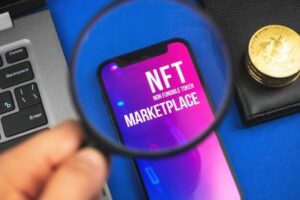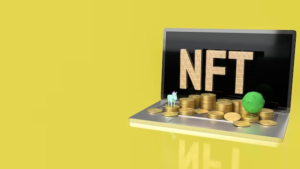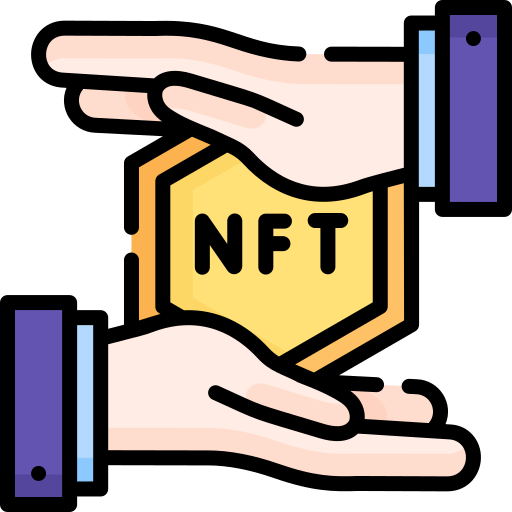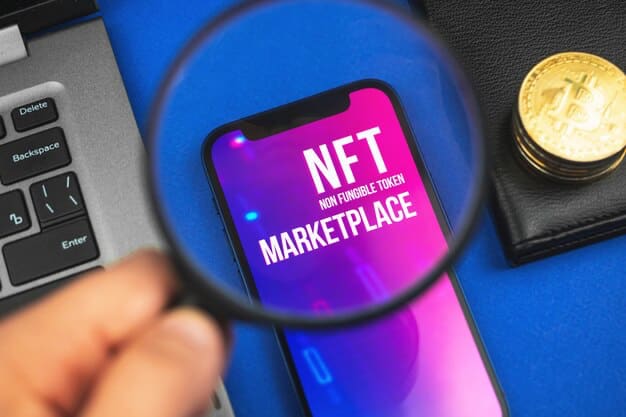Introduction
The financial services industry is known for its fast-paced environment, driven by continuously advancing technology. These advancements have led to revolutionary changes in the way we handle our money and interact with it. One of the most significant innovations that has caught attention lately is Non-Fungible Tokens (NFTs). Banking NFTs are particularly noteworthy as they redefine how banking systems operate. This article takes a closer look at what these tokens offer; their potential benefits and applications, and how they will shape future developments within financial services industries worldwide.
Understanding Banking NFTs
In order to effectively discuss the practical applications of banking NFTs, it is necessary to first grasp their fundamental nature. Non-Fungible Tokens (NFTs) essentially function as digital assets that provide proof of ownership or authentication for a one-of-a-kind item or content on the blockchain platform. The key distinction between cryptocurrencies and NFTs lies in their exchangeability: while cryptocurrencies are interchangeable and can be traded at an equal value ratio, each individual NTF holds its own unmatched qualities rendering them “non-fungible.”
The Intersection of NFTs and Banking
Banking NFTs offer a novel fusion of financial services and NFT technology, presenting an array of possibilities for their implementation in banking operations. These digital assets are not limited to traditional cryptocurrencies; rather, they possess distinct attributes that render them particularly advantageous within the finance sector. Let’s delve into the intersection between banking practices and NFTs by examining different areas where these innovative innovations can be utilized effectively.
Asset Representation
Banking NFTs are largely utilized for indicating ownership of tangible assets, which may include collectibles or real estate properties. Such assets get transformed into individualized tokens that record their ownership on the blockchain system. This mechanism leads to greater transparency and less dependence on cumbersome paperwork, thereby simplifying procedures related to verifying and transferring asset possession.
Tokenization of Securities
NFTs in banking also find use for tokenizing securities, including bonds and stocks. Conventional securities can pose difficulties during trading due to lengthy regulatory processes of settlement. NFTs offer representation for part ownership of such assets resulting in ease of trade and faster settlements thereby opening up opportunities for fractional investment allowing traders to buy or sell even smaller portions from high-value purchase alternatives.
| Traditional Securities | Banking NFT Tokenization |
|---|---|
| Lengthy Settlement Process | Faster Settlement |
| Complex Ownership Records | Transparent Ownership |
| Limited Fractional Ownership | Increased Liquidity |
Secure Transactions
Banking transactions are made more secure by NFTs. The blockchain’s cryptographic properties guarantee the safety and permanence of financial records, lowering the possibility of fraud or alteration. This instills both money-related organizations and clients with increased trust in their interactions due to reduced risks.
Digital Identity Verification
In the banking industry, NFTs can function as exclusive digital markers for entities or individuals. By doing so, it streamlines identity verification procedures like Know Your Customer (KYC), leading to quicker and safer checks. Clients may have their distinct digital identities associated with an NFT, resulting in hassle-free access to financial services while preserving confidentiality.
Innovative Products
By introducing Banking NFTs, financial institutions can explore new avenues for creative and imaginative products and services. They have the ability to utilize collateralized loans through the use of NFT-backed lending options that reduce their dependence on conventional credit assessment procedures. Moreover, they can also create novel investment prospects by establishing unique NFT-based derivatives or other monetary instruments.
Pivotal Use Cases of Banking NFTs

Over the past few years, Non-Fungible Tokens (NFTs) have garnered considerable interest in finance and banking circles owing to their capacity for transforming multiple facets of this field. This article delves into five key applications of Banking NFTs, shedding light on how they can facilitate asset tokenization, identity verification processes, decentralized finance (DeFi), trade financing endeavors as well as loyalty and reward programs.
Asset Tokenization
The process of asset tokenization entails transforming physical assets like real estate, art or intellectual property into digital tokens on a blockchain. In this sector, banking NFTs are essential as they allow for the conversion of these concrete assets to NFTs. Here’s an overview of how it operates:
| Benefits | Explanation |
|---|---|
| Enhanced Liquidity | Tokenized assets can be easily traded 24/7, increasing their liquidity. |
| Fractional Ownership | NFTs allow for the division of assets into smaller, tradable fractions. |
| Global Accessibility | Investors worldwide can participate in asset ownership and trading. |
| Reduced Administrative Costs | Smart contracts automate processes like ownership transfer, reducing paperwork. |
| Increased Transparency | Ownership history and transaction records are immutable on the blockchain. |
Identity Verification
Identity verification and Know Your Customer (KYC) processes are fundamental in banking for security and compliance. Banking NFTs offer a unique approach to identity verification:
| Benefits | Explanation |
|---|---|
| Unique Identity NFTs | Each individual is issued a unique NFT representing their identity. |
| Immutable Records | Personal data and verification records are securely stored on the blockchain. |
| Reduced Identity Theft Risk | The decentralized nature of NFTs minimizes the risk of centralized data breaches. |
| Efficient Customer Onboarding | Streamlined processes reduce the time and effort required for customer onboarding. |
Decentralized Finance (DeFi)
The DeFi sector has seen rapid growth, and Banking NFTs are at its core. These NFTs represent financial instruments such as loans and insurance policies, providing several advantages:
| Benefits | Explanation |
|---|---|
| Secure Transactions | NFTs ensure secure and tamper-resistant financial transactions. |
| Transparency | All DeFi activities are recorded on a public blockchain, enhancing transparency. |
| Efficiency | Automation through smart contracts reduces the need for traditional intermediaries. |
| Global Accessibility | Anyone with an internet connection can participate in DeFi using Banking NFTs. |
Trade Finance
Trade finance often involves complex documentation and processes. Banking NFTs simplify and secure these processes by tokenizing invoices and bills of lading:
| Benefits | Explanation |
|---|---|
| Digitalization of Documents | Invoices and bills of lading become digital NFTs, reducing paperwork and errors. |
| Immutable Records | All trade-related data is recorded securely on the blockchain for reference. |
| Enhanced Trust | Parties involved have confidence in the authenticity and validity of NFT-based documents. |
| Global Trade Facilitation | NFTs make trade finance accessible to businesses worldwide, leveling the playing field. |
Loyalty and Rewards Programs
Banks can utilize Banking NFTs in their loyalty and rewards programs to engage customers in a more personalized manner:
| Benefits | Explanation |
|---|---|
| Unique, Personalized Rewards | NFTs allow banks to offer one-of-a-kind rewards tailored to individual customers. |
| Increased Customer Engagement | Unique incentives encourage customers to actively participate in loyalty programs. |
| Enhanced Brand Loyalty | Personalized experiences foster stronger bonds between customers and banks. |
| Data-Driven Insights | Banks can gather valuable data on customer preferences and behaviors through NFTs. |
Benefits of Banking NFT

Enhanced Security
NFTs leverage blockchain technology, which offers robust security features through its cryptographic nature. These features ensure that financial assets and transactions remain secure and immune to tampering or fraud. The decentralized ledger, combined with cryptographic hashing, creates an immutable record of transactions, reducing the risk of unauthorized alterations.
Improved Liquidity
Traditional financial markets often grapple with illiquid assets, making them challenging to buy or sell in smaller quantities. Banking NFTs address this issue by tokenizing assets, allowing them to be divided into smaller, more manageable units. This divisibility enhances liquidity and market efficiency, as shown in the table below:
| Asset Type | Traditional Market | NFT-enabled Market |
|---|---|---|
| Real Estate | Limited liquidity | Fractional ownership |
| Art | Inaccessible to many | Fractional ownership |
| Private Equity | Limited investors | Wider investor base |
| Rare Collectibles | Illiquid | Fractional ownership |
Innovation in Products and Services
Banking NFTs provide financial institutions with a flexible platform to pioneer new products and services tailored to the digital age. Examples include:
- NFT-backed Loans: Banks can offer loans backed by NFT collateral, reducing the need for traditional credit checks;
- Digital Identity Verification: NFTs can serve as unique identifiers, simplifying KYC (Know Your Customer) processes;
- Tokenized Securities: Companies can tokenize stocks and bonds, simplifying trading and reducing settlement times.
This flexibility allows institutions to adapt quickly to evolving customer demands and technological advancements.
Global Accessibility
The introduction of banking NFTs fosters a more inclusive financial system. Individuals worldwide gain access to financial markets, even those who were previously underserved. This inclusivity can bridge financial disparities and promote economic growth in various regions.
Challenges and Considerations of Banking NFT
While the advantages of banking NFTs are clear, several challenges and considerations must be addressed:
- Regulatory Uncertainty: The regulatory landscape surrounding blockchain and NFTs remains fluid. Banks must navigate evolving rules and compliance requirements, which can vary significantly by jurisdiction. Ensuring compliance while innovating with NFTs is a complex but crucial task;
- Technology Adoption: Integrating NFTs into banking systems requires substantial technological upgrades. Banks must invest in the necessary infrastructure, staff training, and cybersecurity measures to guarantee smooth adoption. This process may be costly and time-consuming;
- Interoperability: The banking sector relies on various blockchain platforms. Ensuring seamless interoperability between these platforms is essential to prevent fragmentation and inefficiency. Industry-wide standards must be established for interoperable NFT usage;
- Privacy and Security: Maintaining the privacy and security of users’ data is paramount. Banks must implement robust data protection measures and cybersecurity protocols to safeguard against breaches and unauthorized access.
Conclusion
Banking NFTs are not just a fleeting trend but a transformative force in the financial services industry, representing a new frontier of innovation, efficiency, and inclusivity. As we leverage the potential of these NFTs to redefine our interaction with financial assets, it’s crucial to consider the integration of dynamic NFTs into the banking sector. Dynamic NFTs, with their ability to update and change based on external data or events, can offer even more personalized and adaptable financial solutions. This enhanced versatility and innovation make banking NFTs an even more potent tool in the future of finance. As the world increasingly moves towards digital-first solutions, understanding and leveraging the power of dynamic banking NFTs will be crucial for individuals and institutions alike. The world of banking, with the adoption of these evolving assets, is poised for an unprecedented era of transformation and growth.
FAQs
NFTs are unique, secure, and immutable, making them suitable for representing ownership and authenticity in banking transactions.
While NFTs can enhance and complement traditional banking services, they are unlikely to replace the entire banking system. They do, however, offer innovative ways to approach finance.
NFTs, built on blockchain technology, are inherently secure. However, their safety also depends on the security of the platforms and wallets used to hold them.
You can start by exploring platforms and services that offer banking NFTs, participating in NFT marketplaces, or consulting with financial advisors knowledgeable about digital assets.










